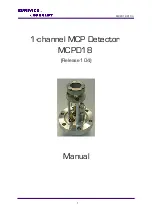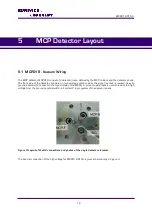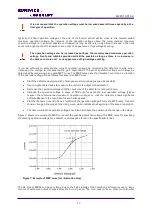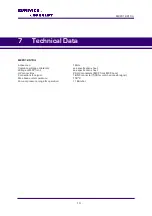
MCPD18 R104
4.2 Standard Operation Procedure
Follow this procedure for all later operation starts, when the detector has already been operated in vacuum
and has not been vented in between.
Finish the complete cabling as described in chapter 3.
Be sure, that the vacuum pressure at the detector is remarkably below 1E-6mbar, otherwise the
microchannel plates might be damaged by a local discharging (in general: the lower the pressure, the
longer the lifetime of the MCPs).
Turn off all sources for electrons, ions, light or X-rays that might hit the detector.
Turn up the high voltage carefully and stepwise within 2 - 3minutes to the operation voltage. The
starting operation voltage is specified in the specification sheet of the detector.
Watch the vacuum pressure while increasing the high voltage; turn the voltages back, if an unusual
increase is observed in the pressure (indicator for high voltage sparking).
High voltage sparks may seriously damage the detector anode or the MCPs. Observe the
chamber pressure carefully every time the high voltage is turned on. Switch off the high
voltage immediately in case of a temporary pressure rise by an order of magnitude or
more. This indicates high voltage sparking.
If sparking occurs, turn down the high voltage immediately and wait some time (up to
5min.). Start the “Start-Up” procedure again with an increased ramp time. Turn off the
high voltage completely, stop the procedure and call SURFACE CONCEPT for further
assistance, if is it not possible to reach the operation voltage without sparking.
Now you may start carefully with an electron source observing the detector output.
Turn off the high voltage before performing any changes of the cabling.
4.3 Bake Out Procedure
It is strongly advised to read the following sections completely before baking out the detector
and to strictly follow all given advises within it.
The maximum allowed temperature for the detector is 150°C. Do not exceed this
temperature.
Windows and feedthroughs should be wrapped with aluminum foil, to protect them from rapid
temperature changes.
The use of heating tapes and jackets is not recommended, due to danger of local overheating.
10






































